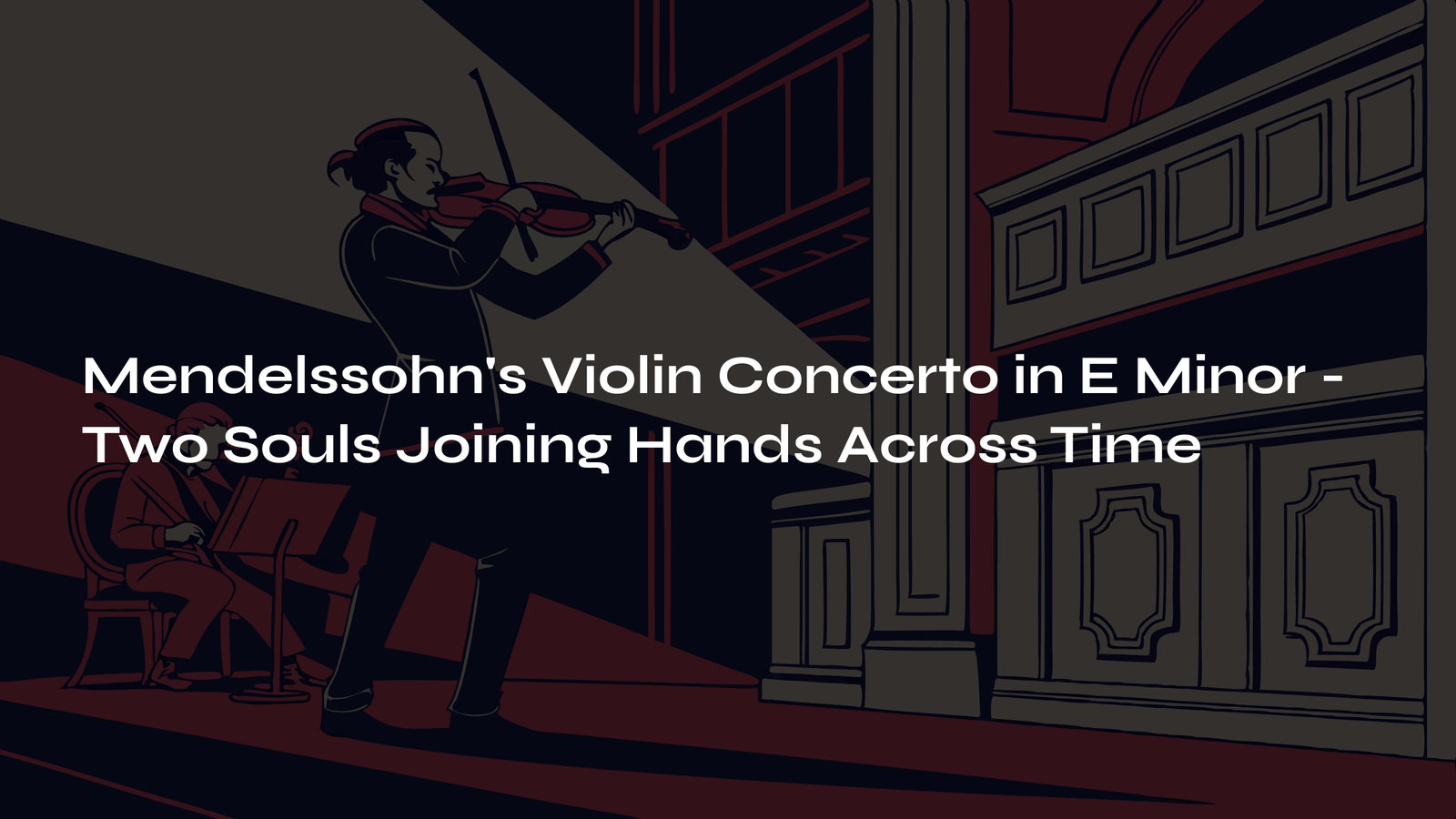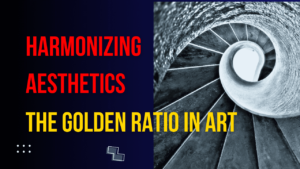Table of Contents
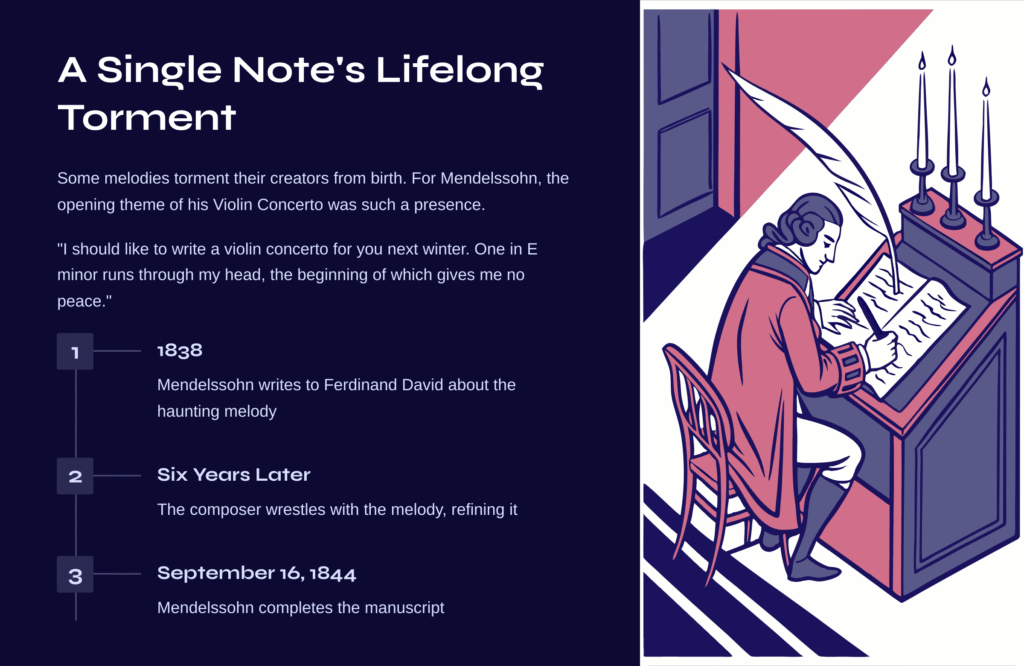
A Single Note’s Lifelong Torment
Some melodies torment their creators from the moment of birth. For Felix Mendelssohn, the opening theme of his Violin Concerto in E minor was precisely such a haunting presence. In 1838, he wrote to his dear friend Ferdinand David: “I should like to write a violin concerto for you next winter. One in E minor runs through my head, the beginning of which gives me no peace.”
How poignant that phrase—”gives me no peace.” For a musician, a melody that springs to mind can be both blessing and curse. Without completion, the soul remains restless; yet even when finished, one can never be certain if the final form matches the original vision. Mendelssohn wrestled with this melody for six long years. Finally, on September 16, 1844, when he placed the final dot on the manuscript, a work that would etch itself into classical music history was born.

Innovation Born of Friendship
What makes Mendelssohn’s Violin Concerto extraordinary extends far beyond its beautiful melodies. This work completely overturned the conventions of the concerto form of its time. Behind this innovation lay a profound friendship between composer and performer.
Ferdinand David was the concertmaster of the Leipzig Gewandhaus Orchestra and Mendelssohn’s closest friend. For six years, the two men exchanged ideas constantly. David provided technical advice as a violinist, while Mendelssohn incorporated these suggestions to refine his work. Through this collaboration, the resulting concerto became not mere technical display for its own sake, but a work that revealed the true beauty of the violin as an instrument.
The premiere on March 13, 1845, in Leipzig was nothing short of sensational. Though Mendelssohn was too ill to conduct and his student Niels Gade took the podium, David’s performance completely captivated the audience. From that day forward, this concerto became a jewel set in the crown of the violin repertoire.
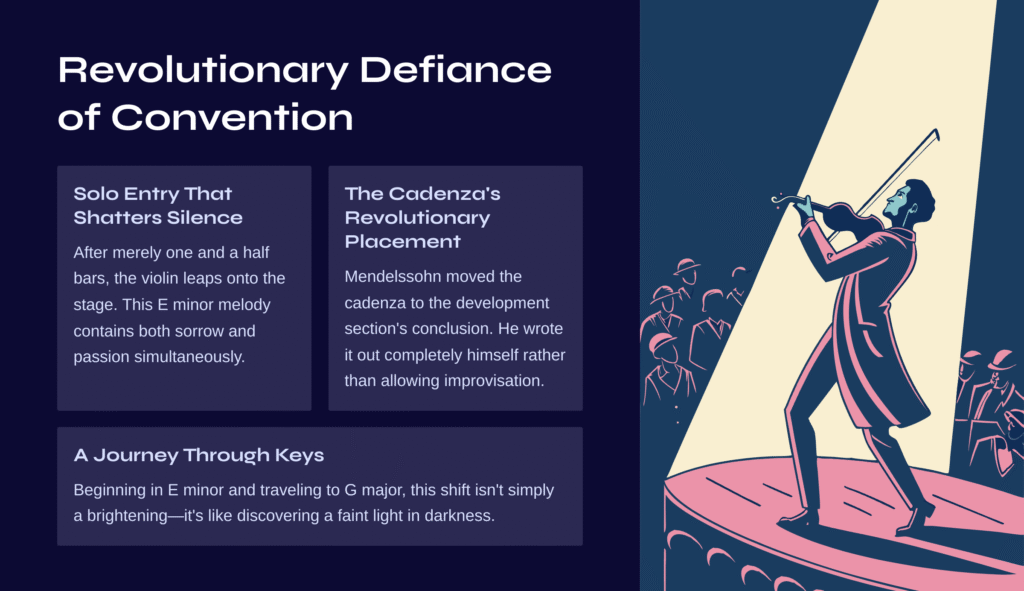
First Movement: Revolutionary Defiance of Convention
Solo Entry That Shatters Silence
In a traditional concerto, the orchestra would first present the themes, only then allowing the solo instrument to enter. But Mendelssohn chose differently. After merely one and a half bars of orchestral accompaniment, the violin immediately leaps onto the stage, as if crying out, “I can wait no longer!”
This E minor melody is truly extraordinary. Containing both sorrow and passion simultaneously, it captures the listener’s heart in an instant. Without any grand orchestral introduction, this single melody completely commands the audience’s attention. This, perhaps, is the true power of melody.
The Cadenza’s Revolutionary Placement
An even more remarkable innovation lies in the placement of the cadenza. Traditionally, the cadenza appeared at the movement’s end, where the performer would freely improvise. However, Mendelssohn moved it to the conclusion of the development section. Moreover, instead of improvisation, he wrote out the cadenza completely himself.
The effect of this decision is astonishing. When the cadenza’s brilliant arpeggios conclude, the orchestra begins to restate the main theme. Yet the solo violin doesn’t disappear—instead, it assumes an accompanying role, supporting the orchestra’s melody. The magical beauty of this moment when protagonist and supporting character exchange roles!
A Journey Through Keys, A Map of Emotions
The first movement begins in E minor and travels to G major. The shift from minor to major isn’t simply a brightening—it’s like discovering a faint light in the darkness, a subtle emotional transformation.
Particularly striking is the tranquillo section, where the woodwinds play gentle melodies while the violin creates a drone on the open G string. In this moment, the music offers a silence as if time itself has stopped—a moment to catch one’s breath, preparation for the passion to come.
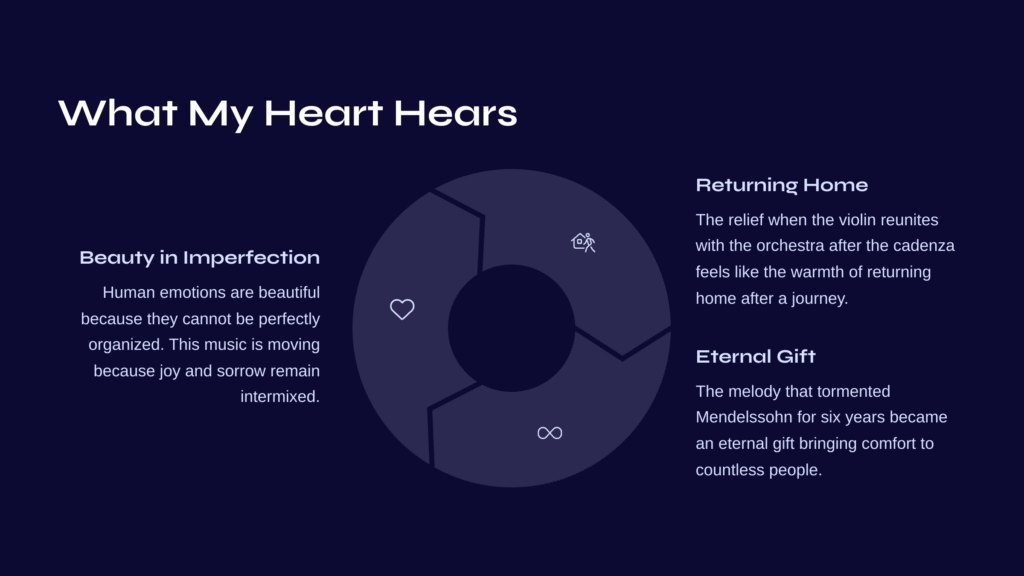
What My Heart Hears
Each time I listen to this concerto, I find myself contemplating Mendelssohn the man. Though he lived a relatively short life, how much beauty did he manage to contain within it? And that melody which tormented him for six years ultimately became an eternal gift bringing comfort and emotion to countless people—how wondrous is that?
While listening to the first movement, I often think about “the beauty of imperfection.” Just as human emotions are beautiful precisely because they cannot be perfectly organized, this music too is more moving because joy and sorrow, despair and hope remain intermixed rather than completely separated.
The relief felt when the violin, after performing its lonely technical display in the cadenza, reunites with the orchestra—how can such a moment be described? It’s like the warmth of returning home after a long journey.
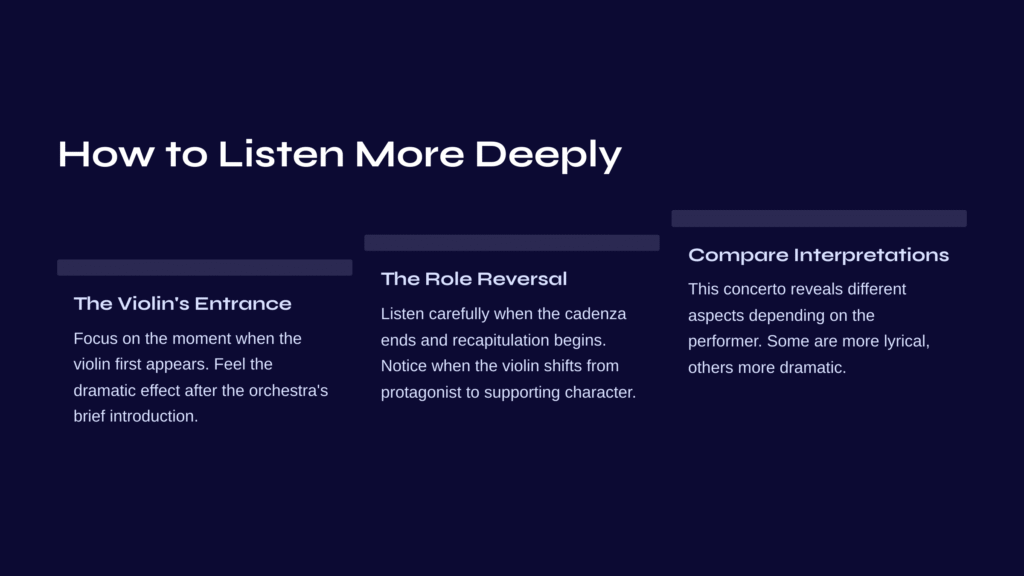
How to Listen More Deeply
To appreciate this concerto more profoundly, I recommend keeping several things in mind while listening.
First, focus on the moment when the violin first appears. Feel the dramatic effect of the violin’s entrance after the orchestra’s brief introduction. To ears accustomed to traditional concertos, this moment should sound truly shocking.
Second, listen carefully to the passage where the cadenza ends and the recapitulation begins. Don’t miss that subtle moment when the violin’s role shifts from protagonist to supporting character. Such delicate changes are precisely what demonstrate Mendelssohn’s genius.
Third, I recommend comparing different performers’ interpretations. This concerto reveals completely different aspects depending on the performer’s personality. Some performances are more lyrical, others more dramatic. Discovering these differences is one of the great pleasures of classical music appreciation.
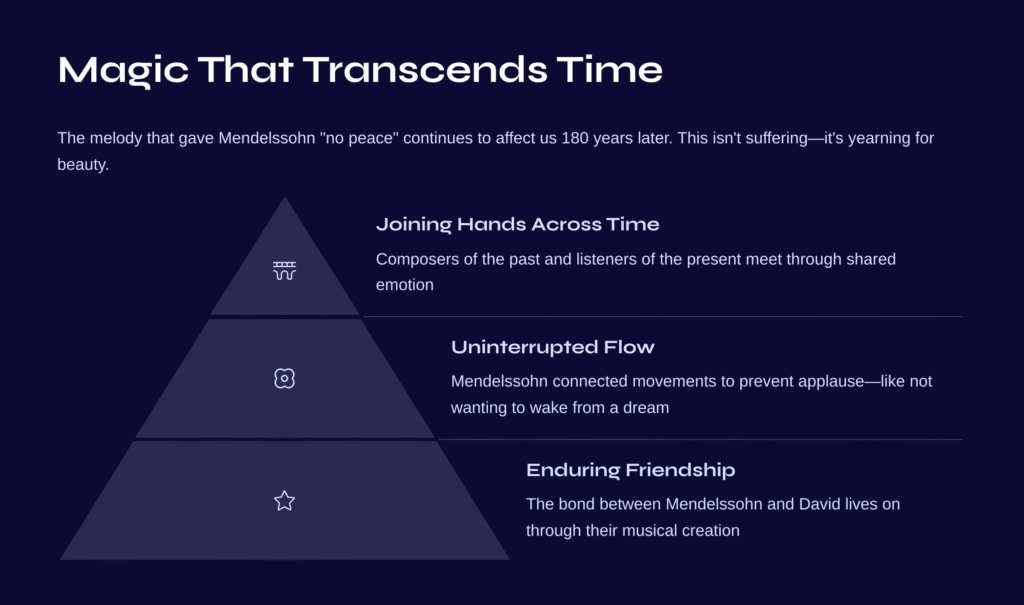
Magic That Transcends Time
The melody that Mendelssohn described as giving him “no peace” continues to deny us peace even 180 years later. But this is not the peace-denial of suffering—rather, it’s the yearning for beauty, the longing for perfection.
As the first movement ends and flows into the second, Mendelssohn reveals yet another innovation. The composer’s intention to connect the movements to prevent applause—how pure was this desire! He didn’t want to interrupt the music’s flow, like not wanting to wake from a beautiful dream.
Every time I hear this concerto, I think: isn’t true art something that transcends time? The friendship between Mendelssohn and David, the beautiful music they created together, continues to be performed somewhere in the world today. And in the heart of someone listening to that melody, the very same emotion that stirred 180 years ago must surely be awakening.
Perhaps music is ultimately about joining hands across time—moments when composers of the past and listeners of the present, though living in different eras, meet through shared emotion.
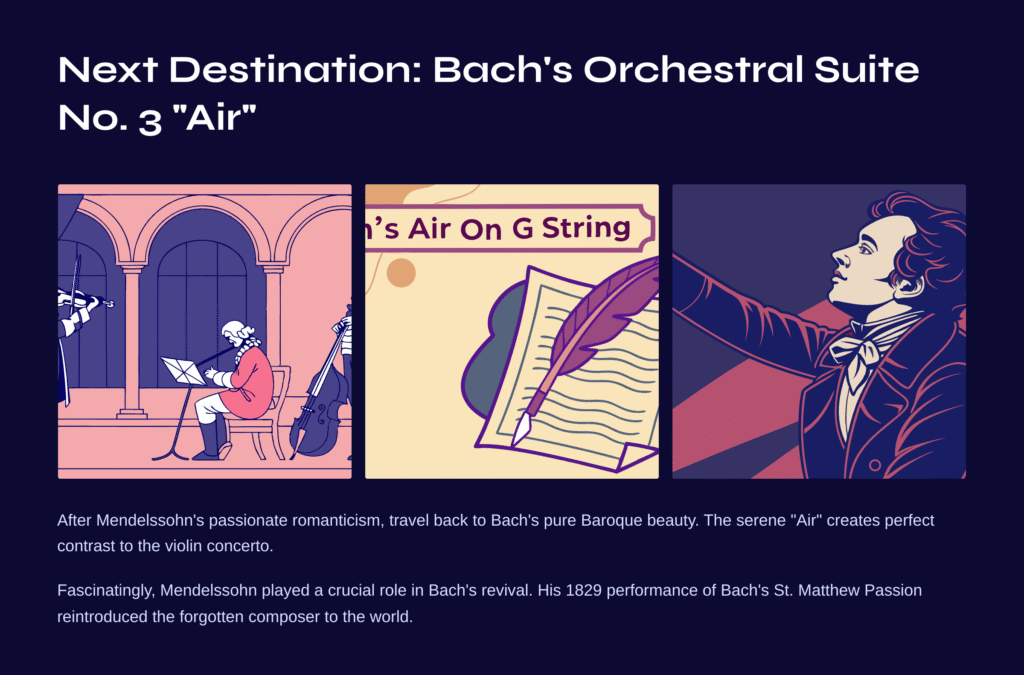
Next Destination: Bach’s Orchestral Suite No. 3 “Air”
If Mendelssohn’s passionate romanticism has stirred your heart, why not travel back through time to encounter the pure beauty of the Baroque era? Johann Sebastian Bach’s “Air” from Orchestral Suite No. 3 offers a completely different dimension of emotion from Mendelssohn’s concerto.
If Mendelssohn was a Romantic composer who brilliantly expressed personal emotions, Bach was like an architect who embodied the order of the universe in music. The serene, sublime beauty of the “Air” creates a perfect contrast to the passionate energy of the violin concerto. One inflames the heart, the other purifies the soul.
Particularly fascinating is the fact that Mendelssohn himself played a crucial role in Bach’s musical revival. His 1829 performance of Bach’s St. Matthew Passion was a historic event that reintroduced the then-forgotten Bach to the world. In a sense, our ability to hear Bach’s “Air” today is also thanks to Mendelssohn.
After the complex, multifaceted emotional journey of the violin concerto, the simple, clear beauty of the “Air” will provide the peace of a sunrise over a quiet lake after a long journey.
